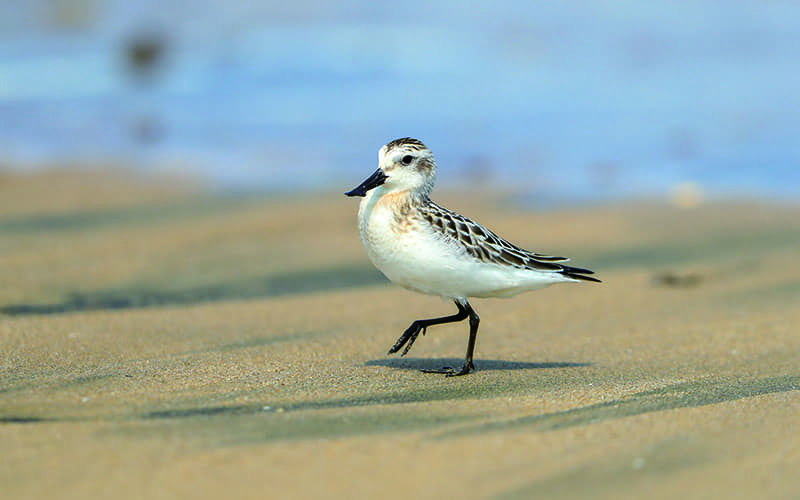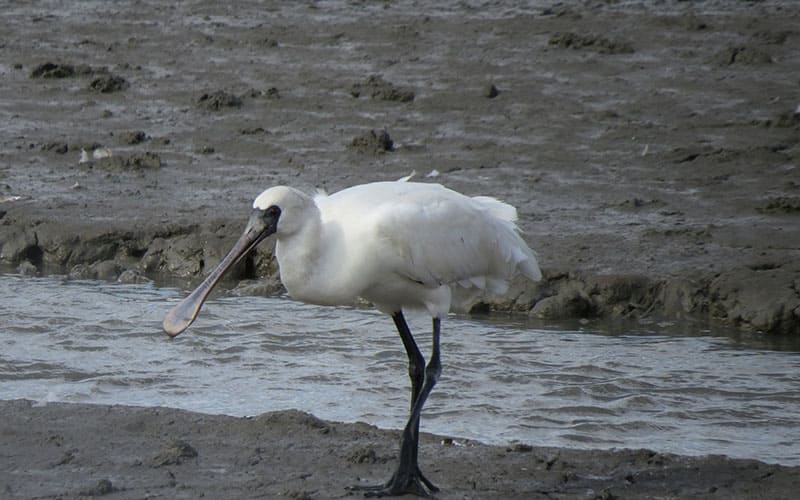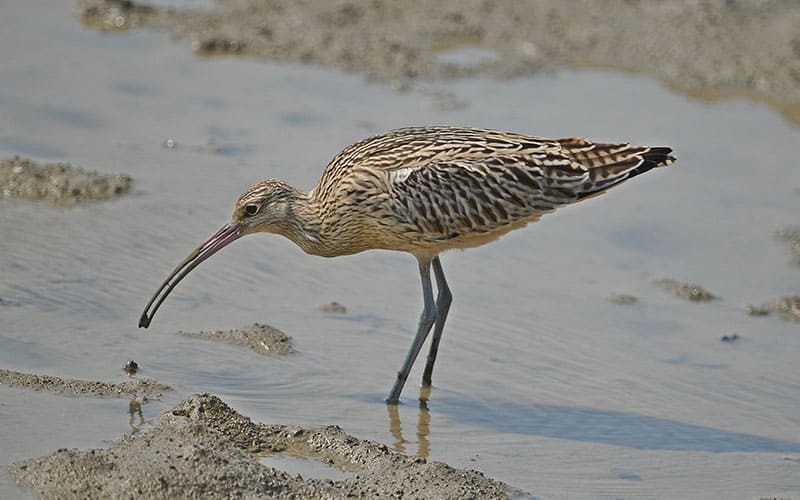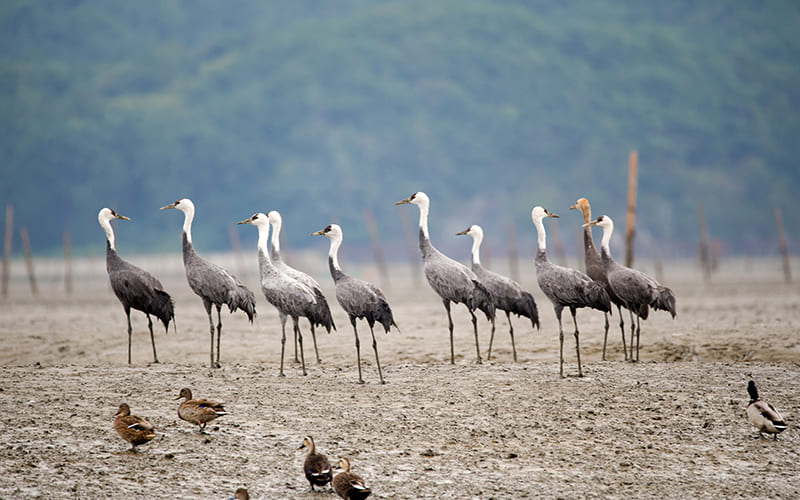한국의 갯벌Criteria
Criterion (x) Habitats for Biodiversity and Endangered Species
- Meeting the Criterion (x)
-
It is a living space and habitat for numerous biological species, including humans, and it is the only resting and stopover site for the great journey of migratory birds from Australia and New Zealand to Siberia and Alaska.
Endangered and Endemic Species
The Natural World Heritage, Getbol, Korean Tidal Flats, has international importance* as a stopover site located
at the bottleneck for the long journey of migratory waterbirds using the East Asian - Australasian Flyway (EAAF).
*Getbol World Heritage supports 101 out of the 250 waterbird species (40.4%) and 47 out of the 63 shorebird species (74.6%) using the East Asian - Australasian Flyway (EAAF).
Among these waterbirds, there are 27 globally threatened species listed on the IUCN Red List,
including Spoon-billed Sandpiper which is the critically endangered with only 400-600 individuals remaining worldwide.
In addition, Getbol, Korean Tidal Flats includes endangered marine invertebrate species along with Convex Crabs, Red Mittens Sesarmid Crabs, Fiddler Crabs, and Chinese Midas-ear Snails, and also homes 47 endemic species, including Tiger Crabs endemic to the Yellow Sea, making it an essential habitat for endangered and endemic species in the coastal ecosystem.
-

- Spoon-billed Sandpiper (CR)
-

- Black-faced Spoonbill (EN)
-

- Far Eastern Curlew (EN)
-

- Hooded Crane (VU)
| Critically Endangered (CR) | Spoon-billed Sandpiper |
|---|---|
| Endangered (EN) | Black-faced Spoonbill, Far Eastern Curlew, Nordmann’s Greenshank, Great Knot, Oriental Stork, etc. |
| Vulnerable (VU) | Swan Goose, Common Pochard, Chinese Egret, Hooded Crane, White-naped Crane, Saunders’s Gull, etc. |
Diversity of Species
Getbol, Korean Tidal Flats encompasses all types of tidal flat habitats existed on Earth such as rocky habitats sand spit, sand dune and characteristic sediment bodies, in addition to muddy, sandy and mixed flats. The property, where includes various habitats, also supports an exceptionally high biodiversity with a total of 2,169 known species including 375 species of benthic diatoms, 152 species of marine algae, 857 species of macrobenthos, 55 species of halophytes, 54 species of fish, and 137 species of waterbirds.
In particular, the tidal flat sediments, which contains a lot of organic matter transported by rivers, shows the world’s highest level of primary production (215.7㎎/㎡). The species diversity of benthic diatoms, marine algae and macrobenthos is also at the highest level in the world.
| Category | Seocheon Getbol | Gochang Getbol | Shinan Getbol | Boseong-Suncheon Getbol |
|---|---|---|---|---|
| **Primary Production | Average 81.0㎎/㎡ | Average 67.6㎎/㎡ | Average 52.2㎎/㎡ | Average 66.8㎎/㎡ |
| Benthic Diatoms | 181 species***dominant species: Paralia sulcata, Amphora holsatica and Navicula sp. | 194 species***dominant species: Diploneis sp. and Amphora libyca, Coscinodiscus sp. and Cyclotella stylorum | 224 species***dominant species: Achnanthes brevipes and Nitzschia apiculata | 188 species***dominant species: Frustulia vulgaris, Pleurosigma sp., Thalassiosira eccentrica |
| Macrobenthos | 181 species | 255 species | 568 species | 445 species |
| Halophytes | 27 species | 25 species | 52 species | 24 species |
| Marine algae (Macroalgae) |
49 species | 9 species | 144 species | 23 species |
| Waterbird species | 100 species | 89 species | 86 species | 102 species |
| Threatened species | 23 species of IUCN Red List, 3 species of threatened invertebrates※ Spoon-billed Sandpiper (CR), Far Eastern Curlew (EN), Korea’s largest habitat for Eurasian Oystercatcher’s (Natural Monument No. 326) |
21 species of IUCN Red List, 1 species of threatened invertebrate※ Korea’s largest wintering site for Oriental Stork (EN) |
17 species of IUCN Red List, 2 species of threatened invertebrates |
27 species of IUCN Red List, 5 species of threatened invertebrates※ Korea’s largest wintering site for Hooded Cranes (VU) |
| Endemic species | 19 species | 23 species and Tiger Crabs, Yellow Sea’s endemic species |
35 species | 19 species |
**primary production : amount of organic matter per unit area
***dominant species : in a biological community, a species that determines the character of the entire community and represents the community
